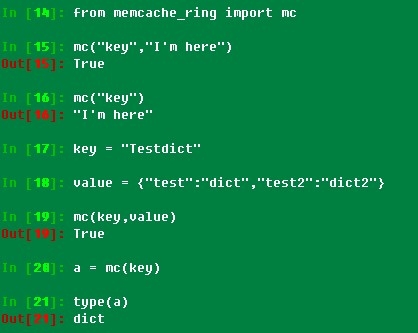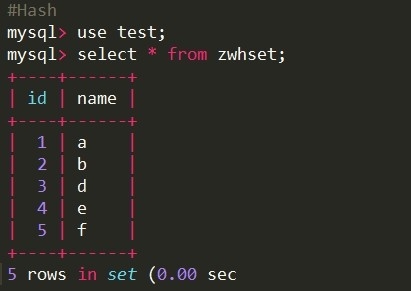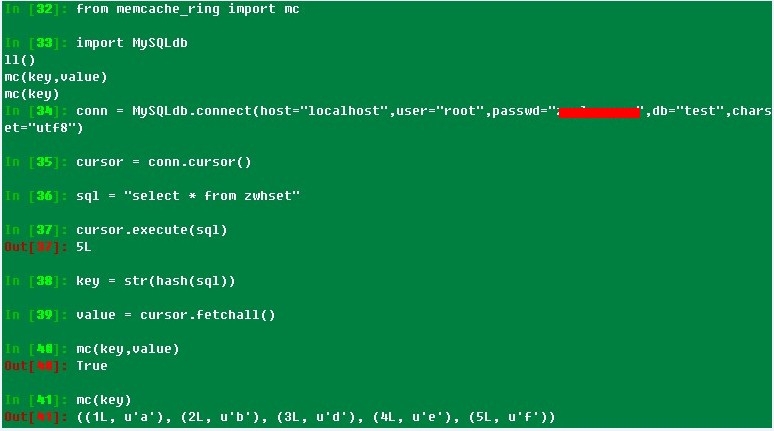煮酒品茶:对 python-memcache 进行学习,把分布式 HASH 算法加进去,不说线上自己玩玩的程序可以加到里面去。memcached 读存数据就这些东西,看着补。
分布式一致性 HASH 算法:memcache_ring.py
#coding:utf8import hash_ringimport memcachememcache_servers = ['127.0.0.1:11211']weights = {'127.0.0.1:11211':1}ring = hash_ring.HashRing(memcache_servers,weights) #if value is null then get else setdef mc(key,value="Null-0"): server_node = ring.get_node(key) mc = memcache.Client([server_node],debug=1) if value == "Null-0":return mc.get(key) else:return mc.set(key,value) 一致性 hash 读取数据:

图片 24.1 pic
从数据库中读取数据
sql:

图片 24.2 pic

图片 24.3 pic
可利用起来的程序,稍改动加一些 try 之类的就可以用到自己的程序玩了。else下key =str(hash(sql))可以去掉。不知道为啥不好册。
#coding:utf8from memcache_ring import mcimport MySQLdb #如果在 memcache 中就不查数据库,不在就取出来并存一份sql = "select * from zwhset where id=100"key = str(hash(sql)) #查数据库def select_sql(sql): conn = MySQLdb.connect(host="localhost",user="root",passwd="",db="test",charset="utf8") cursor = conn.cursor cursor.execute(sql) value = cursor.fetchall #如果没有查到数据,则原值返回 if not value:return value else:key = str(hash(sql))#把存储的结果给调用程序return mc(key,value) #读数据,先看 memcached里有没有,有就直接返回 memcached 查的值,没有就查数据库, #如果数据库也返回空的话原值返回,如果有值就写 memcached,然后把 value 返回if not mc(key): select_sql(sql)else: mc(key)
